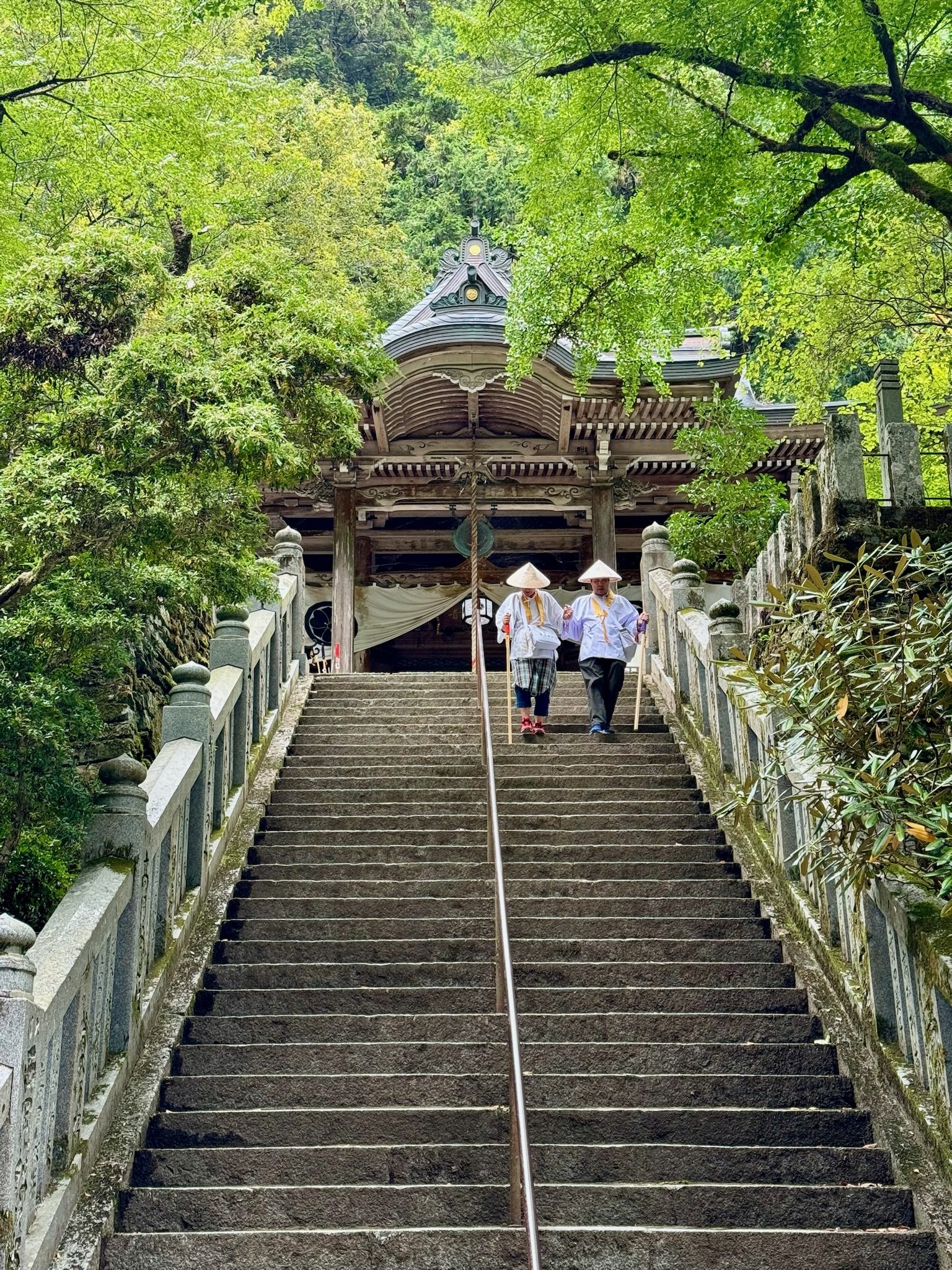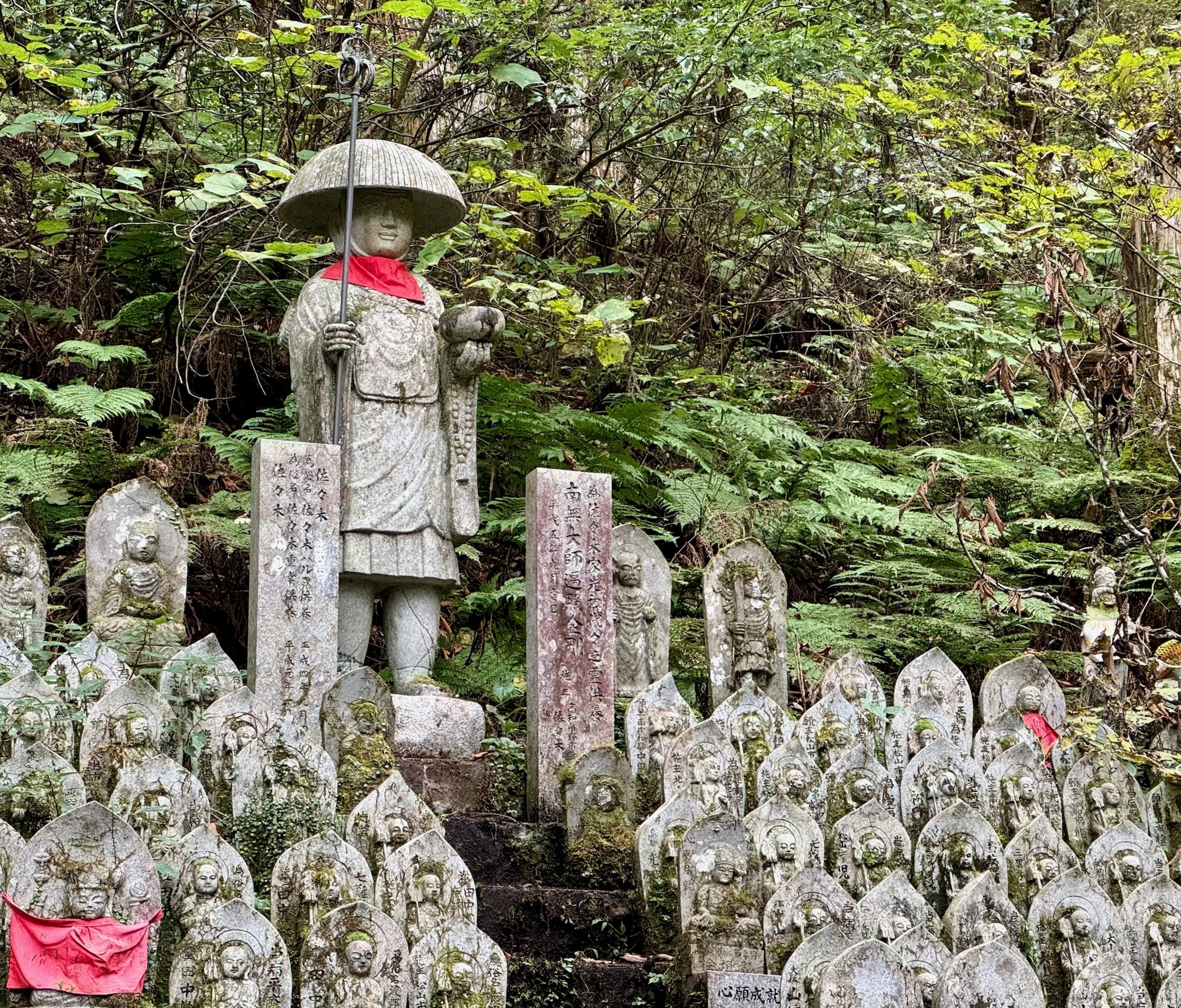Shikoku Pilgrimage
Highlights:
Sacred temples and shrines
Spectacular landscape
The ancient pilgrim route
Traditional rural villages
Brief:
⏱ Duration: 5 - 9 days (usual operator trips)
🗺 Distance: 53 - 83 km
⛰ Grade: Moderate
🗓 Best Time: April - November
🛏 Accomm: Various options
Walk Overview
The Shikoku Pilgrimage is an ancient long distance pathway on the scenic island of Shikoku. The walk links 88 sacred temples where the revered Buddhist priest Kukai is believed to have trained and found personal enlightenment. It is one of the few circular pilgrim routes in the world and covers a distance of 1,200km. It takes about 6 weeks to walk the entire route, averaging 30km per day. Not surprisingly, tour operators seek to provide a walking holiday based upon the highlights of this epic footpath.
The island of Shikoku is home to spectacular and undeveloped scenery. The walk mostly follows village paths, forest trails and mountain roads which pass through traditional rural villages, tranquil woodlands, valleys, hillsides, rice fields, orchards and market gardens. The 88 main temples along the route are divided into four clusters in the provinces of Sanuki, Awa, Tosa and Ehime. In addition to the stunning main temples, there are many beautiful small shrines on either side of the path which also serve to guide the way.
There are various Shikoku Pilgrimage walking holidays to choose from. Several tour operators offer guided trips on specified dates. These guided tours seek to provide an informative, cultural and educational narrative to the walking experience. They can also provide peace of mind when travelling in areas where little English is spoken. Some tour operators offer self-guided itineraries which include transfers between the trail and accommodation, where necessary. Whilst the trail is generally well maintained and signposted, self-guided itineraries require a degree of self-reliance and good map reading skills.
Some Shikoku Pilgrimage walking holidays include additional components of sightseeing in Osaka and Kyoto as well as incorporating elements of train and bus travel, covering a period of between 9 and 11 days. Other tours concentrate more on the rural walking highlights of the Shikoku Pilgrimage and offer a shortened version of the walk usually involving 5 days of walking.
Delicious local food is sampled along the way including the popular speciality of udon wheat noodles. This is also a unique opportunity to experience traditional accommodation in Ryokan inns and Shukubo pilgrim lodgings, some with onsen thermal hot spring baths.
Assistance and further information:
For assistance in walking all or part of the Shikoku Pilgrimage, click the button below.
For information on other walks in Japan, click the button below.
A 5 day itinerary focusing on the temples in the Tokushima and Kagawa prefectures is described below.
Five Day Itinerary
A 5 day itinerary focusing on the temples in the Tokushima and Kagawa prefectures is shown below.
Day 1
Tokushima Prefecture - Temples 1, 2 and 3
Distance: 6 km
Time: 2 hours
Accommodation: Ryokan/Shukubo
Day 2
Tokushima Prefecture - Temples 11 and 12
Distance: 10 km
Time: 4 hours
Accommodation: Ryokan/Minshuku
Day 3
Tokushima Prefecture - Temples 13, 14, 15, 16 and 17
Distance: 9 km
Time: 3 hours
Accommodation: Ryokan/Hotel
Day 4
Tokushima Prefecture - Temples 20 and 21
Distance: 8 km
Time: 3 hours
Accommodation: Ryokan/Hotel
Day 5
Kagawa Prefecture - Temples 82, 81 and 80
Distance: 14 km
Time: 5 hours
Accommodation: Ryokan
Walk Options
Guided
Several tour operators offer various versions of the Shikoku Pilgrimage Trail as a guided trip. Most tours start in the Tokushima Prefecture on Shikoku Island. Some tours also incorporate Kyoto and Osaka in the itinerary. Guided tours are usually offered on specified dates.
Accommodation options include hotels (en-suite bathrooms), Japanese style inns (Ryokan), guesthouses (Minshuku) and temple lodges (Shukubo). The traditional style accommodation such as ryokan and minshuku provide futon bedding, tatami mat flooring and shared bathrooms.
Typically, the package offered by these operators includes:
Walking tour with professional English speaking guide
5 - 10 nights of accommodation
All breakfasts and most dinners
Transfers between tour locations, as set out in the itinerary
Entrance fees to museums, shrines and temples, as per the itinerary
Luggage transfers (although the extent of this varies between tour operators)
Some operators offer a dedicated support vehicle
Assisted self-guided
Some tour operators offer self-guided trips on the Shikoku Pilgrimage Trail. Typically, the service includes:
Track notes, maps, daily itinerary and information pack
Accommodation in a mixture of hotels, ryokan and shukubo. En-suites are not generally available at traditional inns.
Transfers including train/bus tickets for journeys between track locations, as set out in the itinerary. Some operators also include train/bus tickets to and from Shikoku Island.
Breakfasts and dinners
Telephone support from local English speaking area manager
Daily luggage transfers are not always included but can be arranged with operators at an additional cost.
The duration of the self-guided options vary depending upon how many days you wish to spend on the Shikoku Trail and whether you wish to have additional nights in certain villages, towns or cities.
Independent
There is a range of traditional inns and guesthouses in the villages along the route offering accommodation and local cuisine. Some have private onsen hot spring facilities.
Essential Information
Access
The closest airport will depend upon which itinerary you choose. For many, either the Tokushima Airport or the Osaka Kansai Airport (KIX) is the best option. Domestic flights between Tokyo’s airports (Haneda and Narita) and Tokushima Airport take approximately 1 hour 20 minutes. The bus ride between Tokushima Airport and Tokushima Station takes approximately 30 minutes. Alternatively, there are express buses from Osaka’s Kansai Airport to Tokushima Station which take approximately 2 hours 45 minutes.
Best time
The best time to do the walk is between April to June / October to November. April and May are cherry blossom months. October and November are colourful autumn foliage months. July and August in the Japanese summertime can be hot and humid. August and September are in the local typhoon season.
Accommodation providers may charge extra during Japanese holiday periods: New Year (29 Dec - 4 Jan), Golden Week (29 April - 5 May), O-bon (9 Aug - 17 Aug).
Difficulty
This walk is rated at a moderate level of difficulty. The route follows paved village paths, unpaved mountain tracks, stone steps and paddy field trails. Overall, the path is gently undulating with some strenuous ascents and descents. The trail is partly waymarked in Japanese and in English. Detailed track notes and maps are provided by tour operators.
Luggage Transfers
Luggage transfers are not always included in the price. Additional charges may apply. Due to the remote location of some villages, it is not always possible to transfer luggage to every accommodation site. In this instance, walkers need to carry overnight essentials in their daypack.
Additional Days
Additional days can be added to self-guided itineraries. Popular destinations include Nara (World Heritage temples and gardens), Mount Koya (complex of 100 temples) and Asuka (rural village on the Yamato Plains).
Assistance
We can assist walkers with various aspects of their walking holidays.









